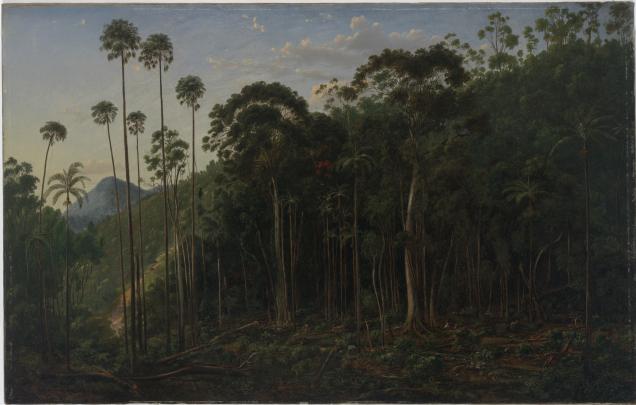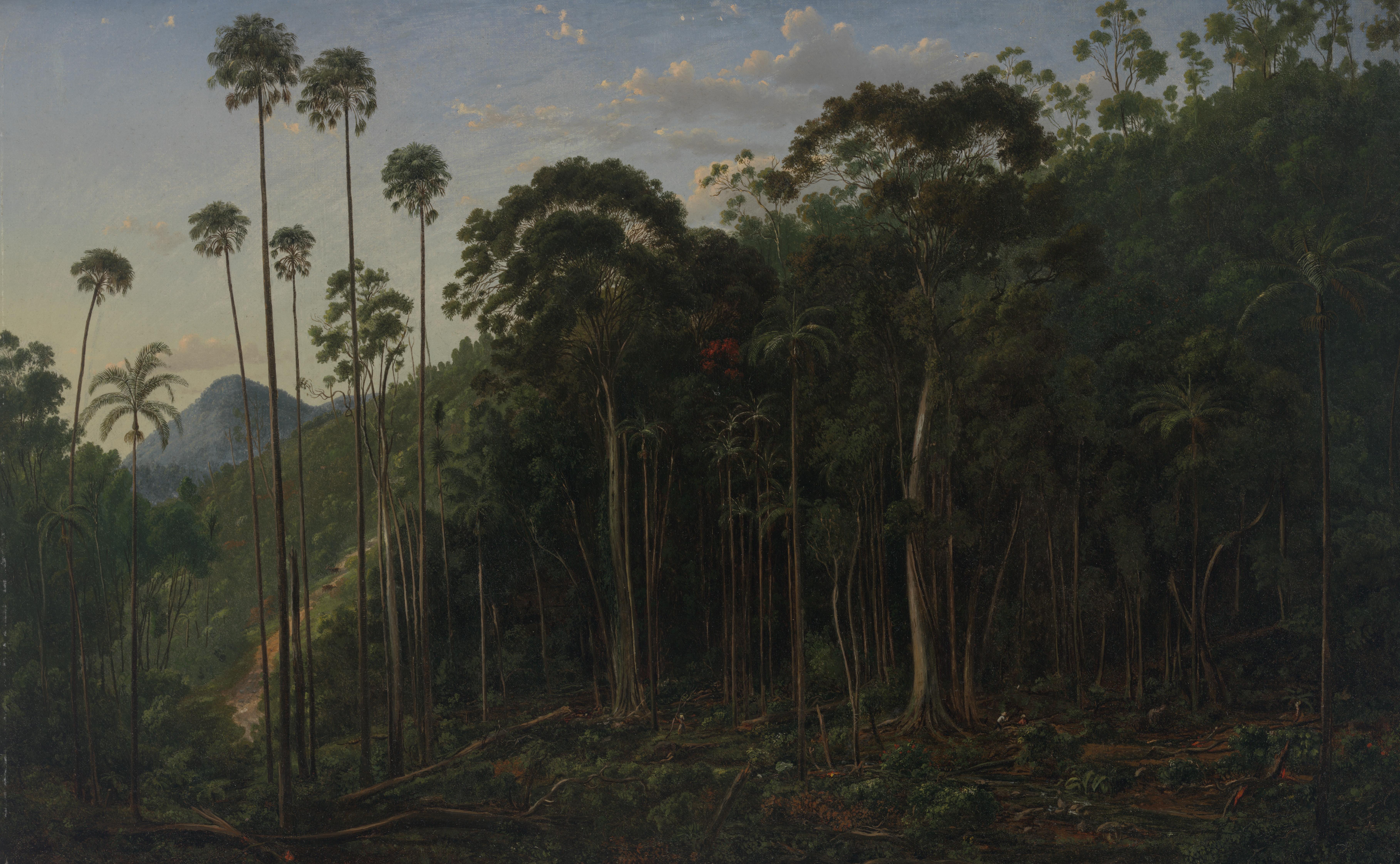A roof over our heads
Students investigate the building materials used by the colonists and explore the significance of the cabbage tree palm to Aboriginal people.
This is the student activity 1 of 7 of the Setting up camp learning activity.

A roof over our heads
The ships of the First Fleet carried building materials as well as tents. This included 10,000 bricks (as ballast), 1000 small panes of glass, 200 door hinges and 100 iron locks with keys. Obviously these items were not intended for the convicts! The plan was for convicts to construct their own shelters after building houses for everyone else.
Use a thesaurus to find other words that mean shelter.
Read the following quotes from primary sources.
Surgeon George Worgan wrote in a letter to his brother in June 1788 that:
The principal Business has been the clearing of Land, cutting, Grubbing and burning down Trees, sawing up Timber & Plank for Building, making Bricks, hewing Stone, Erecting temporary Store-houses, a Building for an Hospital, another for an Observatory, Enclosing Farms & Gardens, making temporary Huts.
Second Lieutenant Newton Fowell wrote in a letter to his father on Saturday, 12 July 1788 that:
a number of hovels built of cabbage tree for some of the officers… are chiefly thatched with rushes but some are covered with wooden tiles
Captain John Hunter noted in 1789 that:
The rest of the houses are built with logs and plaistered; and all the roofs are either covered with shingles or thatched.
A book called The Voyage of Governor Phillip to Botany Bay, that was based on the reports from Arthur Phillip and other First Fleeters was published in London in 1789 and describes the buildings in early Sydney:
The first huts that were erected here were composed of very perishable materials, the soft wood of the cabbage palm. The necessity of using the wood quite green made it also the less likely to prove durable. The huts of the convicts were still more slight, being composed only of upright posts, wattled with slight twigs, and plaistered up with clay…Buildings of stone might easily have been raised, had there been any means of procuring lime for mortar.
An anonymous female convict described their huts in a letter she wrote in November 1788:
… Windows they have none, as from the Governor's house, etc., now nearly finished, no glass could be spared; so that lattices of twigs are made by our people to supply their places.
Identify words from these primary sources that relate to building a shelter. Circle or list them.
Define any unknown words: hovel, rushes, thatch, plaistered, wattling, mortar, lattices of twigs
Read this quote from Surgeon George Worgan explaining the use of cabbage tree palms in June 1788:
Cabbage-tree…the Wood of these Trees, (wh. Is very soft,) is of great Use to Us, for; cut into proper lengths and split in half, they serve for walling the Huts.
Look at the painting of cabbage tree palms.
Answer this question:
- Can a painting be a primary source? Discuss.
A primary source is something that was created at that time in history. It could be many things; a written document like a diary or letters, an artefact like a convict brick and yes, even a painting! The primary sources from this era of Australian convict history only represent the point of view of the colonisers. Remember, when examining historical sources, it is important to ask: Who created it? When was it created? Why was it created? Whose perspective is this? Are there other perspectives to consider?
Referring to your circled answers or word list of building materials, answer these questions:
- Can you group some of the building materials according to their origin?
- Why did the people who had arrived on the First Fleet use these materials?
- Can you now group some of the building materials according to who lived in the shelter? Why were some materials used for one group and not another?
- What is green wood? Why was it a problem in building?
- Why was lime needed?
For Gweagal people of Kamay/Botany Bay cabbage tree palms are spiritually significant and these trees also had a variety of uses in a practical sense. Branches and the broad leaves of the tree were used to build shelter and provide shade. They were also used as a food source, the cabbage tree palm heads were soaked in water before being roasted and eaten.
Listen to Dr Shayne Williams talk about the significance of the cabbage tree palm to Gweagal and Dharawal people here.
Draw a cabbage tree palm and label it. The scientific name is Livistonia australis. Research what areas of Australia a cabbage tree palm grows. Depending on where you live, look out for a cabbage tree palm growing in your local area.
